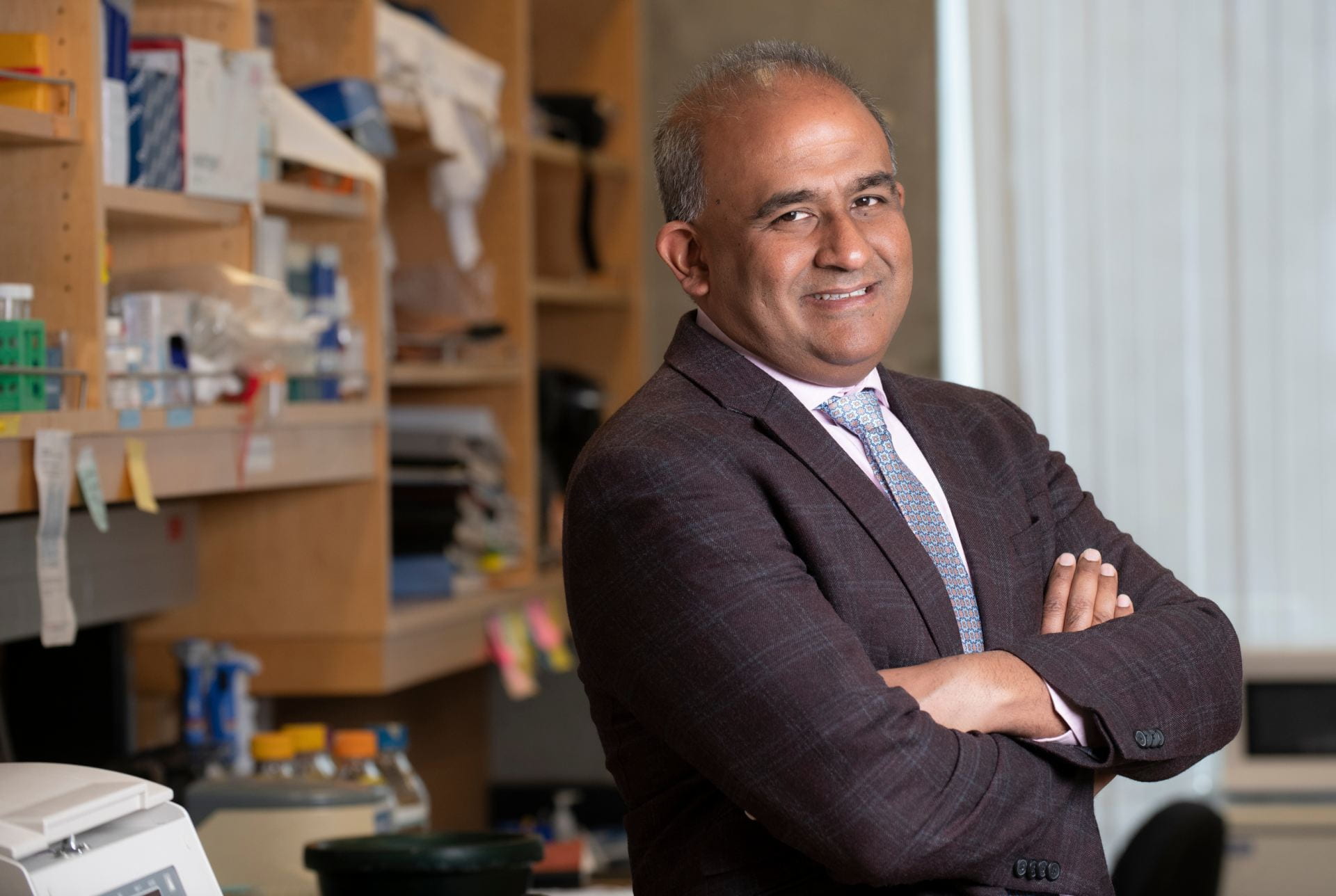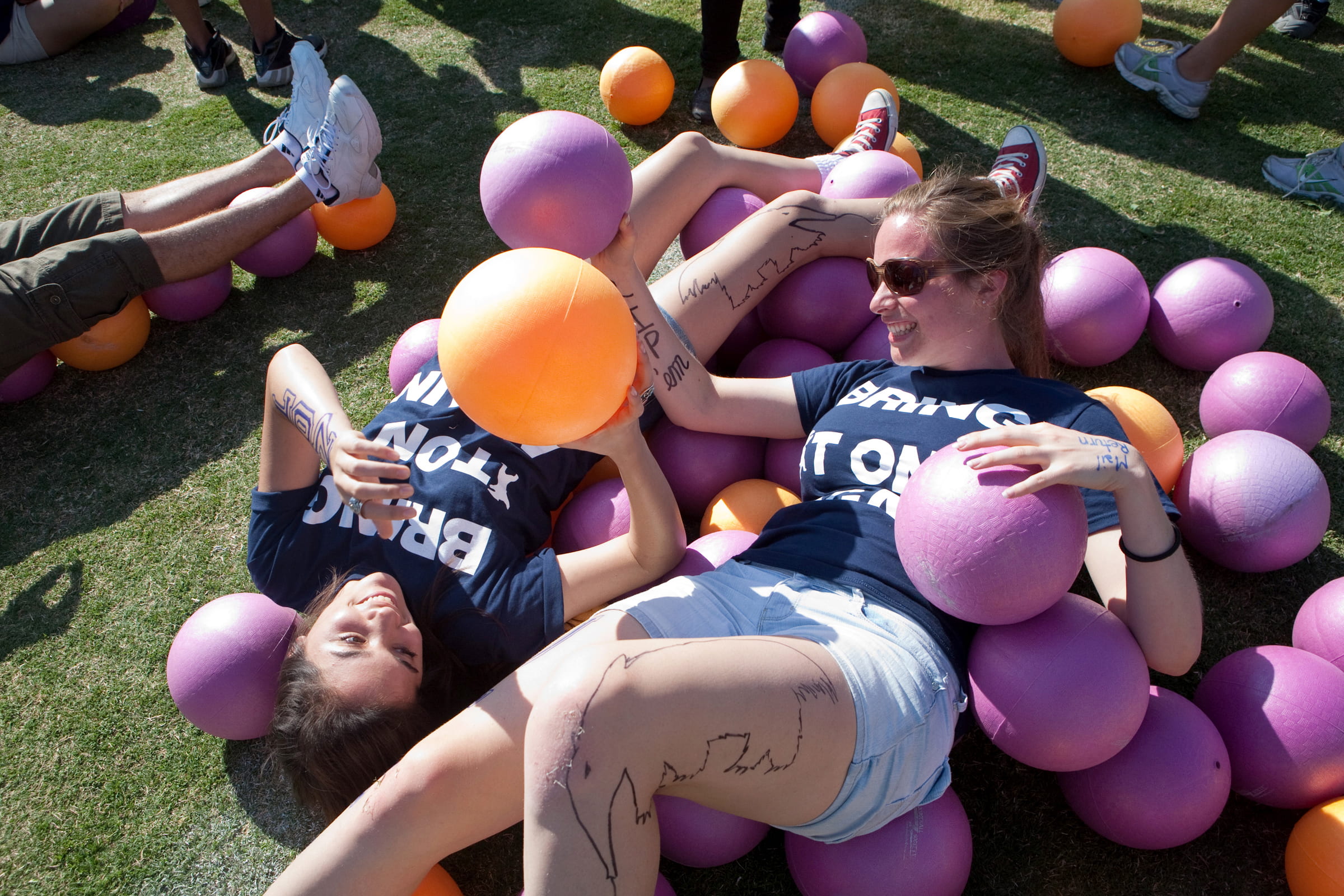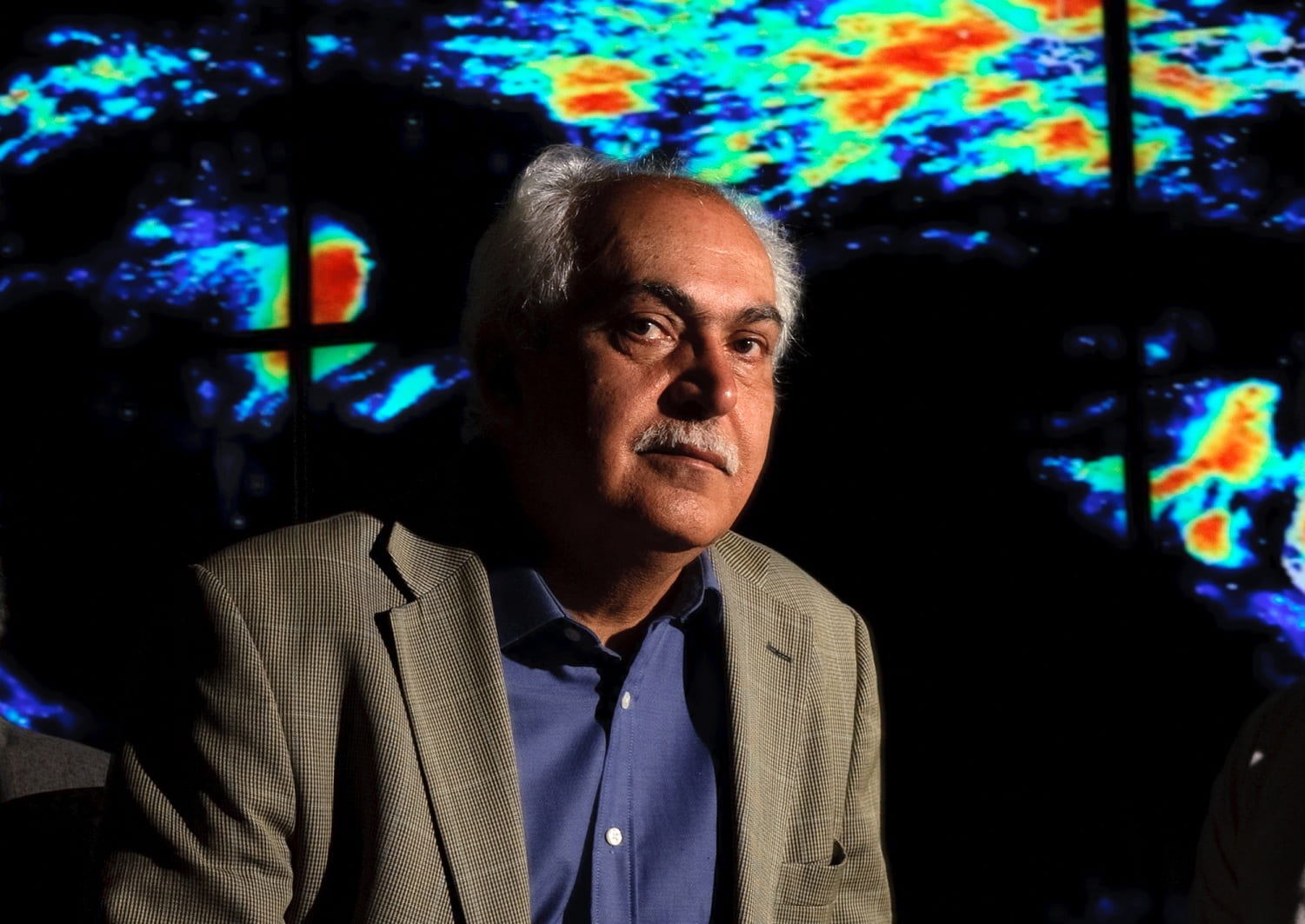Getting in tune with patients
Matt Fradkin, a fourth-year student in UC Irvine’s School of Medicine, was doing research at CHOC Children’s Hospital when he saw firsthand how music could relieve a patient’s suffering. A boy of about 7 with cancer had been lying in bed complaining constantly of pain when a music therapist entered his room and began playing the guitar. “The child became completely distracted. He stopped buzzing the nurse to ask for more morphine,” Fradkin recalls. “I thought that was amazing.”
Until that incident three years ago, his interest in music had revolved around his band, Honest Iago. He was a red-haired guitarist playing punk rock when he wasn’t wearing his white coat and learning to become a doctor at UCI. Suddenly, Fradkin began looking at music as medicine.
“Music therapy is such a great tool; it helps these kids so much with pain management,” he says. “But I found out it wasn’t readily available. I just thought there had to be a way to get it into more hospitals and clinics.”
In summer 2009, Fradkin formed Music to Heal to bring the sound of music to patients’ bedsides — whether listening, playing or learning. The organization has more than 50 volunteers, many of them UCI medical students, who perform and teach everything from classical to rap to patients of all ages. They even loan out instruments and MP3 players with vouchers for downloading favorite songs.
“We’re doing this to make it as easy as possible for hospitals to offer music therapy, and one way we can do that is to give them the tools,” Fradkin says. “Plus, music is fun.”
So far, Music to Heal has made the rounds at UC Irvine Medical Center; CHOC, in Orange; Miller Children’s Hospital Long Beach; Grossman Burn Centers in Santa Ana and Los Angeles; Mattel Children’s Hospital UCLA; and several other facilities nationwide.
“Research supports the idea that music contributes in important ways to both physical and emotional healing. The Music to Heal program translates this possibility into concrete action on a daily basis,” says Johanna Shapiro, professor of family medicine and director of UCI’s Program in Medical Humanities & Arts. “Matt recognizes that healing occurs on many levels and medicine needs to attend to them all.”
Knowing that not everyone on a hospital ward welcomes the sound of a jam session, Fradkin first had to figure out how to keep the music from disturbing other patients. “The noise was a barrier,” he says. “Ask any parent. It’s not easy on the ears when someone’s learning to play the violin.”
Fortunately, Fradkin’s father, Gary, works at Yamaha, which sells a line of silent instruments that can only be heard through headphones. Yamaha Cares, the company’s charitable arm, donated guitars, keyboards and other instruments to Music to Heal, among them some that could be operated by burn patients via hands, feet, elbows, fingers or toes — “whatever was not burned,” Fradkin says.
Playing music also has proven to be good physical therapy. Respiratory and postoperative patients, for instance, can practice on wind instruments to help clear their lungs.
Fradkin recalls an unusual recital by a 13-year-old girl at Miller, where he’s done a few rotations. She had been given a silent guitar to take her mind off fighting an aggressive form of cancer. At first, she didn’t know how to play it, but one day she asked Fradkin to visit her.
“I ran over to her room on my break, and she started playing ‘If I Die Young,’ he says. “It was very powerful. She was saying something she couldn’t express except through music. Now she’s writing and playing amazing songs.”
For patients who want to continue to play after they leave the hospital, Music to Heal provides donated instruments they can keep. “We’ll take an instrument gathering dust in a closet somewhere — what we call an orphan instrument — fix it up, and give it to the patient to take home when they’re ready.”
Patients can even play together, thanks to a mobile Jam Station created by Music to Heal volunteer Melody Besharati ’11, a first-year UCI medical student who earned her bachelor’s in music performance. The cart holds a guitar, bass, keyboard, digital drum set, mini amps, microphones and a silent rehearsal mixer that allows for bedside group performances. So far, the equipment is in use at five hospitals nationwide, including CHOC.
“We wanted kids of all ages to congregate and share their experience,” Fradkin says. “Nothing melds people better than jamming with a band.”
In the future, he hopes, Music to Heal can collect enough donations to support additional research on the medical benefits of music therapy so that it will be offered at more hospitals.
“Studies at Harvard and other universities have shown that patients who have music therapy are happier, use less pain medication and have better outcomes,” Fradkin says. “But there’s still a lot of research to be done. It’s one thing to say music makes people better and another to have hard facts showing how, on a biological level, music can help patients.”
He says one theory is that music blocks the brain’s pain receptors. “Music is complex. It has rhythm, melody, tone, lyrics,” he notes. “It floods the nervous system and, like a traffic jam on the 405 freeway, keeps the pain signals from reaching the receptors.”
To raise money, Music to Heal holds benefit concerts, silent auctions on its website, and special events by students from the Orange County High School of the Arts. In addition, it has teamed with Anaheim’s House of Blues to present fundraisers featuring performances by UCI students and staff on Thursday nights in December.
“Music is cheaper than pain management,” Fradkin says. “Will it replace medicine? No, absolutely not. But it really helps patients of all ages deal with their time in the hospital. And a happy patient is a better patient.”
Originally published in ZotZine Vol. 4, Iss. 3


